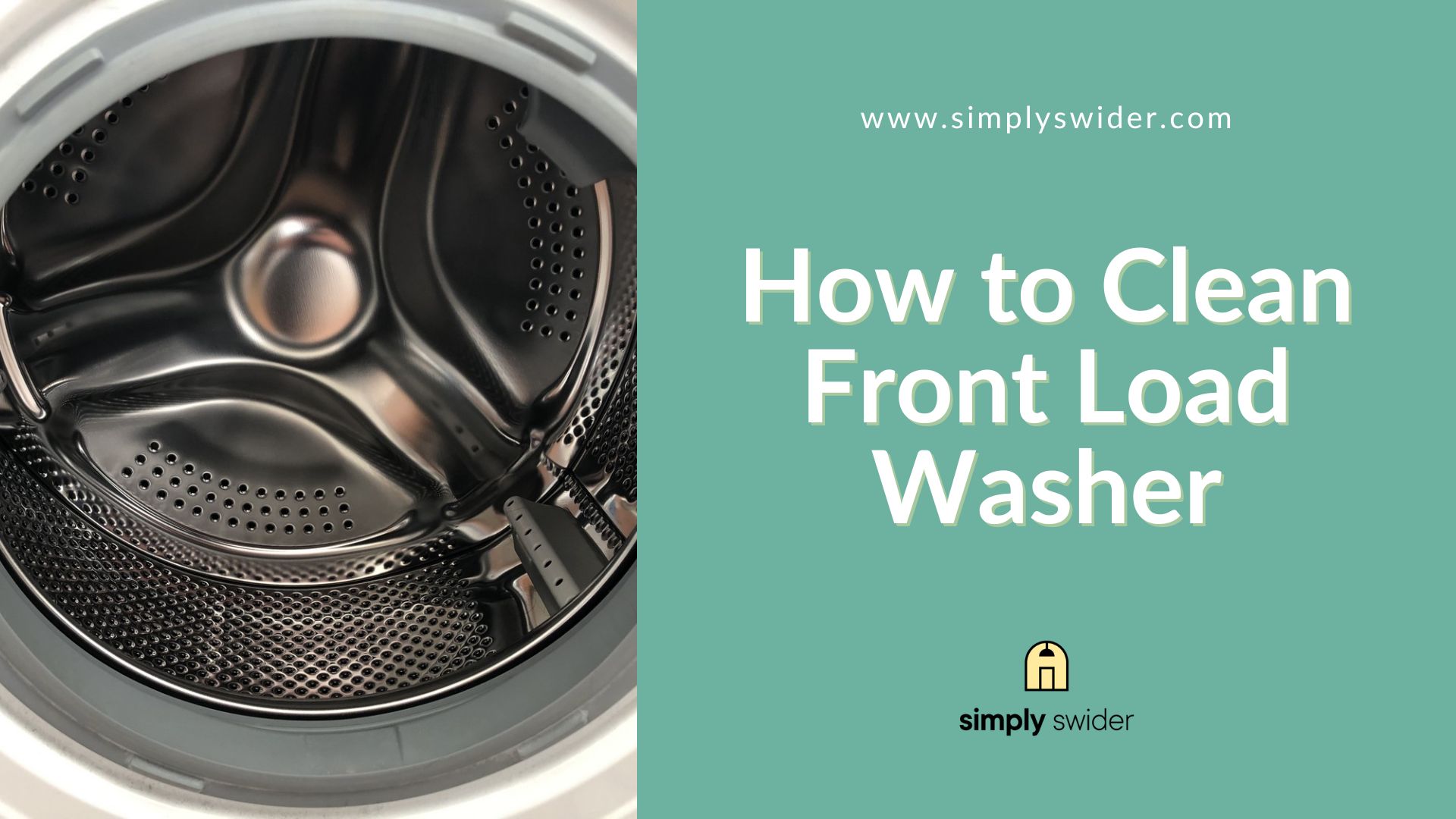Let me take a guess:
You wish your front load washer could clean itself the way it cleans your clothes and fabrics. Unfortunately, this isn’t the case and probably will never be.
So:
To keep your front load washer neat, you can either clean it yourself or have someone do it. A good cleaning can remove dirt, kill odors and even lengthen your machine’s lifespan.
Luckily:
Cleaning your front load washer is straightforward. Follow these steps.
Table of Contents
How to Clean Front Load Washer
Cleaning your front load washer helps freshen it and lengthen its lifespan. To clean it, start with the gasket, then proceed to the front load washer’s drum. The third and last step is cleaning the exterior. Also, learn maintenance tips for your washer and how often you need to clean it.
Step 1: Clean the Gasket
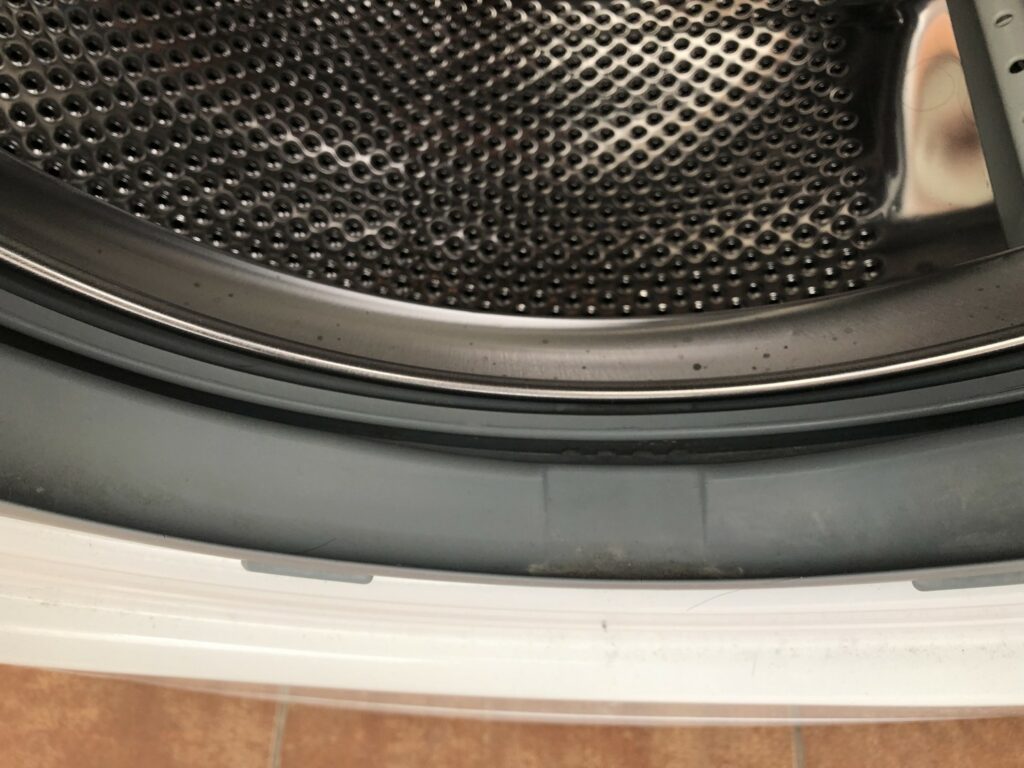
The first step to cleaning your washer is to locate and clean the gasket (otherwise known as the rubber seal)
But what exactly is the gasket? You may be wondering:
Well, the gasket is a large o-ring rubber that runs around the door of the front load washer. When the washer is in use, the gasket keeps water from spilling out.
Now, here’s the thing:
If left unchecked, the gasket can accumulate mold and other unwanted objects, which could be detrimental to the washer’s efficiency.
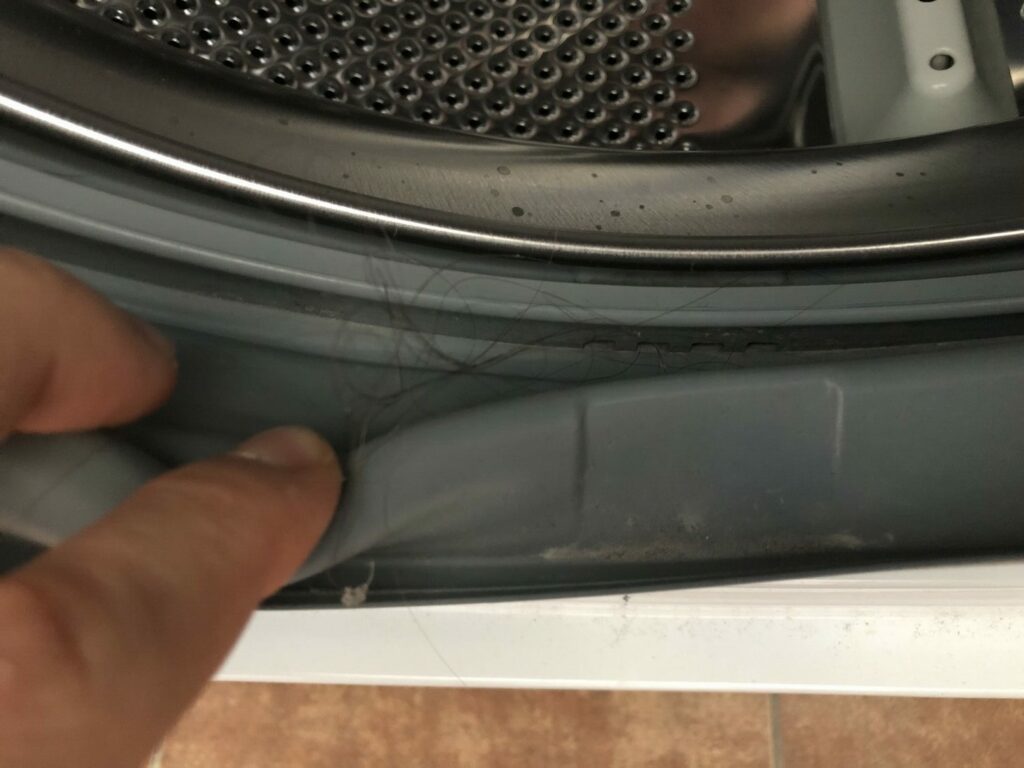
Of course, you don’t want this to happen, so be sure to clean the gasket regularly.
To do this, you’ll need the following items:
- White vinegar
- Water
- Spray bottle
- Soft fabrics
- Toothbrush
- Bleach solution
Now, to clean the gasket, follow these steps:
- Step 1: Prepare a vinegar solution by mixing equal portions of white vinegar and ordinary water into a spray bottle. This will be the main cleaning solution.
- Step 2: Peel back the gasket so you can access the interior.
- Step 3: Check for pins, buttons, hair, paper clips, and coins inside the gasket. Remove any found object.
- Step 4: Using a clean fabric, wipe any dust residue from the gasket and clean the lint filter.
- Step 5: Spray the cleaning solution over the gasket and scrub it using a clean fabric.
- Step 6: Wipe the solution from the gasket using another clean fabric.
While cleaning, you may notice that the gasket is growing black spots. These spots are early signs of mold.
Typically:
Mold occurs when you don’t leave your washer to dry completely before using it again. It can also appear when there’s too much detergent residue in the gasket.
Thankfully:
Vinegar is an effective mold combatant. You’ll mix it with hot water and spray the spots this time. Leave it for a few minutes before scrubbing it with a toothbrush.
However:
If the mold has fully developed, thus becoming more stubborn and widespread, you’ll have to give the gasket a deep clean. Simply empty the drum, pour one cup of bleach and run a hot clean cycle.
After that, run a couple more rinse-only cycles with hot water to flush off the remains of the bleach.
Alternatively:
You can remove stubborn mold from the gasket by scrubbing it gently with a toothbrush dipped in bleach.
Note:
This may require you to wear gloves and a mask for safety reasons.
Step 2: Clean the Drum
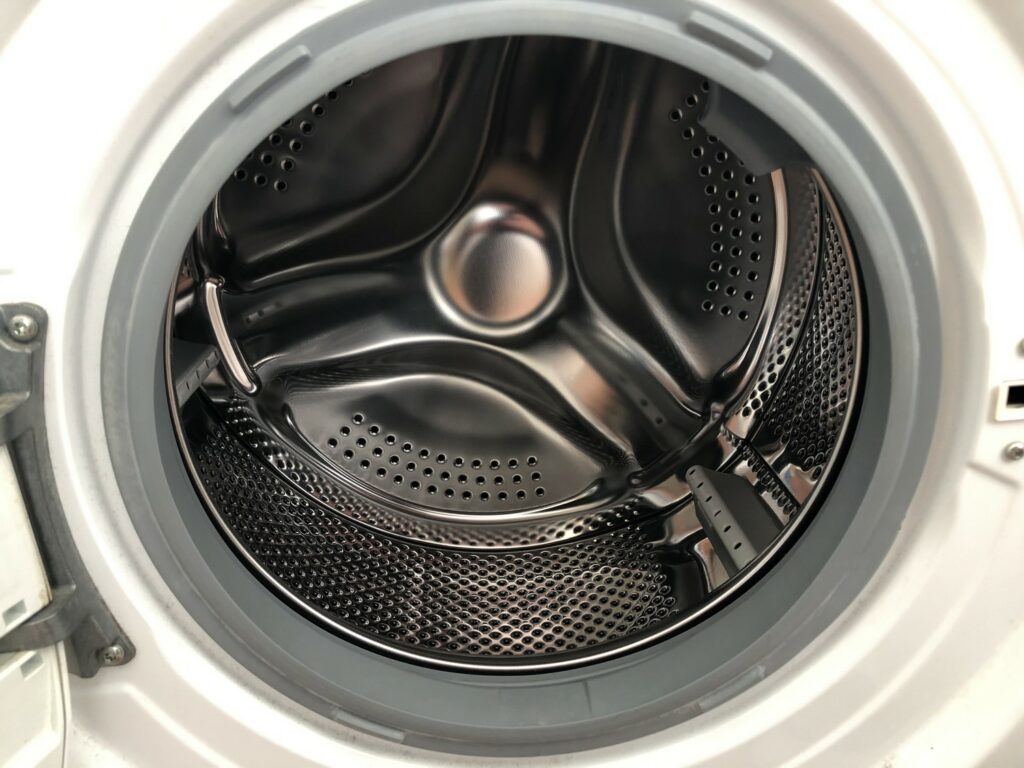
Now:
After cleaning the front load washer’s gasket, move on to the drum. The drum is the part of the washer where you put the clothes; where the washing happens.
Thus, you must keep it neat if you want your clothes to really come out clean.
Here’s a list of things you’ll need to clean the drum:
- Baking soda
- White vinegar
- Toothbrush
- Detergent (to make soapy water)
- Soft and clean fabric
After preparing these items, clean the drum with the following steps.
- Step 1: Empty the drum and wipe it with a clean rag to remove debris.
- Step 2: Pour half a cup of baking soda inside the drum and shut the door.
- Step 3: Locate the detergent tray and fill it with two cups of white vinegar. You can also add a small amount of white vinegar to the softener tray.
- Step 4: Run a high-temperature hot cleaning cycle and watch as the baking soda and vinegar combination thoroughly washes the drum. Allow the machine to complete the wash and rinse cycle.
- Step 5: Use the toothbrush to scrub off any stubborn dirt from the drum.
- Step 6: Eject the detergent and softener tray and clean off any vinegar residue. Spray the tray with a cleaning solutionand wipe off the solution with a clean fabric after a few minutes.
- Also, you can soak the tray in soapy water and rinse it multiple times until there’s no sign of vinegar.
- Step 7: After cleaning the drum and tray, open the door so the washer can air dry.
Remember:
It is important to refer to your user manual before cleaning the drum. Your machine might have a specific cleaning cycle you need to be aware of.
Step 3: Clean the Exterior of the Washer
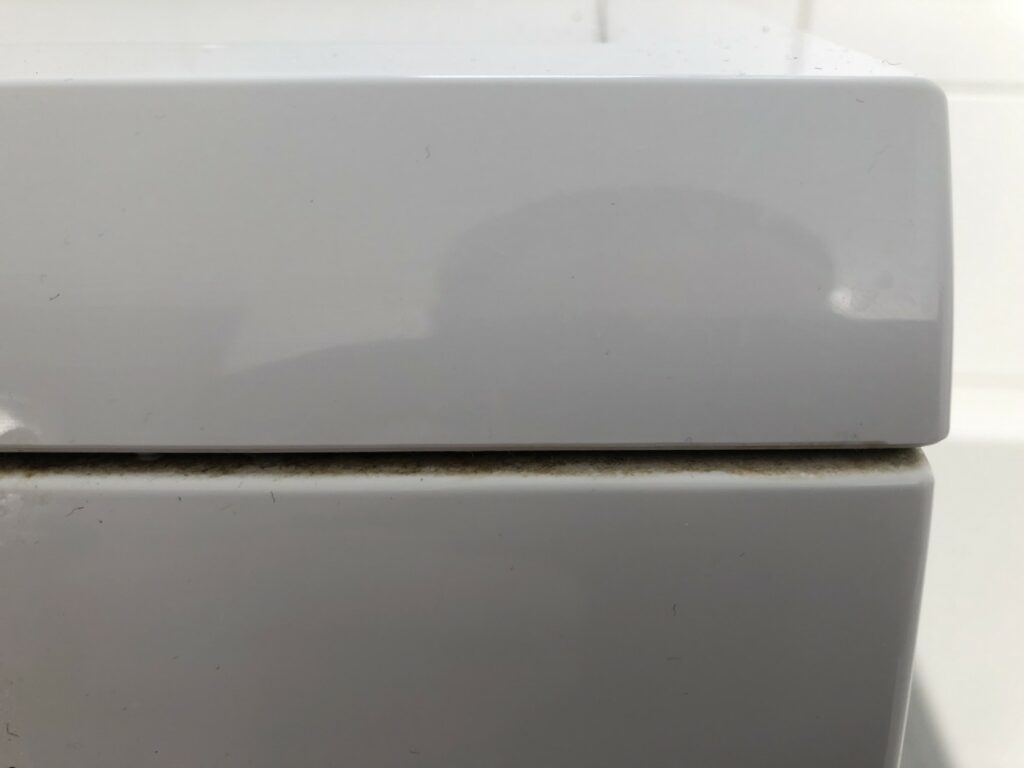
The final and perhaps the easiest phase is cleaning the exterior of your front load washer. To do this, the following items are required:
- Clean fabrics
- White vinegar or lemon juice
- Baking soda paste
Now, follow these to clean:
- Step 1: Start by wiping the surface of the washer with a dry and soft fabric to remove dirt. Avoid fabrics with rough and not-so-soft surfaces.
- Step 2: Wipe the surface again. This time, however, with a soft fabric dipped into a vinegar solution or lemon juice.
- Step 3: Wipe off the vinegar solution or lemon juice from the washer’s surface using another clean, dry and soft cloth.
If there are hard stains on your washer’s exterior, you may want to employ a toothbrush and baking soda paste. You can prepare the paste by adding hot water to baking soda.
Dip the toothbrush inside the paste and scrub off any stubborn or hidden stains.
Also:
While cleaning the exterior, check the washer’s hose to ensure it’s not clogged. If it is clogged, you’ll need to clear the soap residue, limescale, dryer lint, and other materials.
You can do this using a drain cleaner or a snaking tool.
How to Maintain Your Front Load Washer
In addition to cleaning:
You should also know how to maintain your front load washing machine. Here are some of the best maintenance practices:
- Remove your clothes from the drum immediately after laundry.
- See that the drum, gasket, and seal are dry before commencing a new laundry cycle.
- Don’t leave cleaning agents on the top of your washer. A spill can damage parts of the washer.
- Only use detergents specifically designed for high-efficiency machines.
- Ensure that your laundry room is tidy. Dirt will likely enter your washer if you have a messy laundry room.
How Often Should You Clean Your Front Load Washer?
After cleaning your washer, you may be unsure of the right time to clean again.
Ideally:
You should do a general cleaning at least once a month, especially if heavily soiled clothes make up a significant part of your laundry.
However:
Not all parts of the washer can wait for 30 days before being cleaned. So, let’s check the key parts of a front load washer and how often you need to clean them.
The drum
Cleaning the drum every monthly general cleaning should do. You can do this with a high-temperature long wash cycle.
Leaving the drum uncleaned beyond one month would likely result in an odor that can transfer to your clothes.
The exterior
We recommend cleaning the washer’s exterior after every laundry session or at least once a week.
The exterior is constantly exposed to dust and dirt, which may end up inside the machine if not cleaned.
The Gasket
A weekly clean for the gasket should suffice but ensure you wipe it completely before starting another laundry session. Fail to clean the gasket when due, and you may see mildew all over.
The Hose
Ideally, the hose should be disconnected from the washer and thoroughly cleaned at least once a year. Also, you should check it after every laundry session to ensure no water residue is left inside.
Not clearing the hose would most likely affect your washer’s efficiency. Also, you may find residue lint and detergent residue in your washer.
Note:
Manufacturers recommend replacing hoses after five years as they’ll become weaker, thus likely to leak.
Conclusion
Having an unclean front load washer has negative effects on your clothes and the machine itself. Therefore, you must clean it from time to time.
Fortunately:
Cleaning and maintaining the washer isn’t a complicated task. Simply follow these steps:
- Clean the gasket
- Clean the drum
- Clean the outside of the machine
- Remove your clothes after the laundry
- Wipe the drum and gasket before laundry
- Use only detergents specifically made for washers
- Do a general cleaning for the washer at least once a month.
- Clean parts like the exterior and gasket more regularly
And that’s a wrap.
If you have further inquiries about cleaning your washer, don’t hesitate to reach us via the comment box below.
Frequently Asked Questions
Yes, you can run vinegar through your front load washer to deep clean the gasket or drum. This is done by loading the vinegar into the detergent tray and running a cleaning cycle.
The best cleaner for a front load washing machine is a combination of white vinegar and baking soda.
To remove mold from the rubber seal, start by wiping it with a dry cloth to remove dust and dirt. Then, spray a vinegar solution (white vinegar and hot water) around the seal and leave for a few minutes. After that, wipe the solution from the seal using a dry cloth.
If it’s a stubborn mold, you’ll need to deep clean the rubber seal. Simply pour one cup of bleach inside the drum and run a hot clean cycle.
You can clean the rubber seal by peeling it back and removing objects like pins, buttons, and coins. Next, wipe the seal with a cloth to remove dirt. Lastly, spray it with vinegar or soapy water and wipe it off minutes later.

